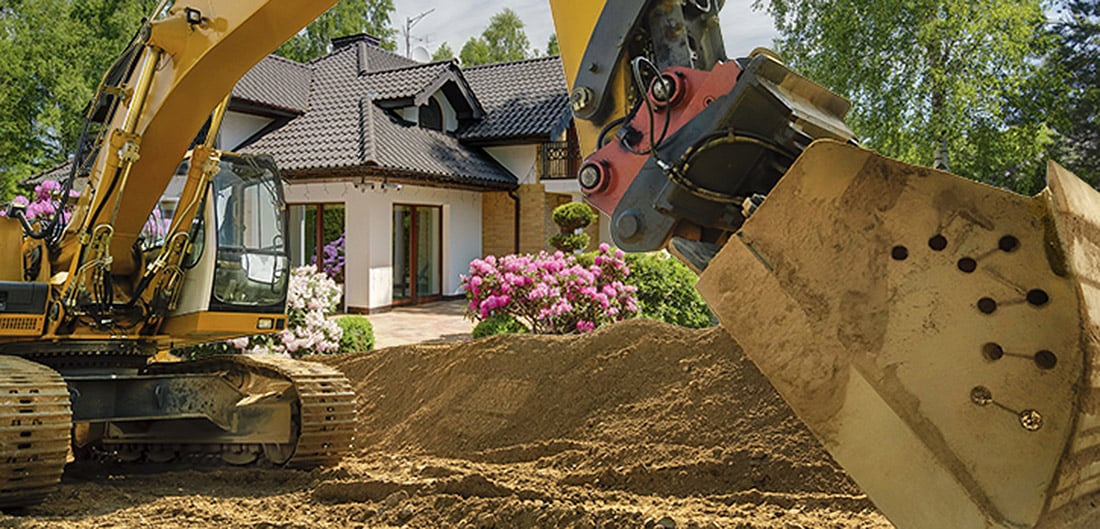A sewer line backup might seem like it appears out of nowhere, but the mucky mishap can quite literally take root beneath your yard.
By infiltrating pipes underground, seemingly benign tree roots can cause harmful sewer line destruction, blockages and, yes, backups.
But before you chop down your favorite source of shade, it’s important to understand what causes this issue, whether your home is vulnerable and how to keep it from happening.
Why Can Tree Roots Invade Your Pipes?
First off, let’s not boogeyman tree roots.
The Environmental Protection Agency (EPA) estimates there are at least 23,000 to 75,000 sanitary sewer overflows (SSOs) per year. Tree roots entering pipes through defects and openings are just one cause of blockages. Others include improper maintenance, faulty connections, structural breakdowns and the flushing of items that don’t belong down the drain.
What can make tree roots particularly insidious is their ability to attack and invade a pipe from the outside and keep coming back. This is because roots seek out moisture, oxygen and nutrients. While intrusion can occur at any time of the year, it’s most likely during dry spells, seasonal root growth in spring and fall, or cold winters when warm sewer pipes create moisture that attracts roots to tiny cracks and joints.
Sewer lines—especially older ones made from clay or concrete—can develop tiny cracks or loose joints. Tree roots can sense vapor in the soil coming from warm wastewater inside the pipes, enter through the openings and grow toward the source.
Once they find an opening, they slip in. Inside the pipe, the roots thrive in the warm, nutrient-rich environment, growing into a dense mass that catches grease, wipes and other debris. Over time, that root mass can block the flow, leading to slow drains, backups and costly repairs.
What Kind of Damage Can They Do?
By exploiting the cracks and joints, roots can severely damage your pipes’ integrity. Besides causing slow drains and backups, advanced root intrusion—when roots thicken, branch and pry open cracks— can lead to pipe failure and collapse over time.
When roots compromise pipes’ integrity, one possibility is that water can leak out into the surrounding soil. This process, known as exfiltration, can make your yard feel soggy or spongy underfoot. Left unchecked, the escaping wastewater can gradually wash away the surrounding soil, eventually leading to a sinkhole.
When wastewater can’t flow out, it can back up through the lowest drain openings, often occurring in basement floor drains, showers and toilets. This process is called infiltration and can happen even if part of the wastewater is already escaping into the soil.
And the damage from these backups may only start with sewer lines. The resulting wastewater escape can also threaten foundations, yards and basements as well as pose a significant health risk by spreading dangerous sewage in the home and in surrounding soil.
What Should You Do if Roots Take Over Your Pipes
It shouldn’t be surprising that your first step should be to stop running water if you notice slow drains, gurgling toilets or sewage backing up. Every bit of additional water adds pressure, which can cause more sewage to build up. And if you know wastewater is already backing up, turning off your water supply can prevent further flooding.
The next step is to call a licensed plumber, who might inspect the blockage using a small video camera and use root removal tools, such as a plumbing snake or a hydro jetter, to clear the pipe. (Don’t waste your time with store-bought drain cleaners, as they won’t get to the root of the issue. Root killers won’t help either; the damage is already beyond that point.)
That’s only the beginning of the fix, unfortunately.
Depending on the severity of the blockage, there might be damage to the pipes. Repairs may range from trenchless solutions to major excavation work.
And don’t forget about the fact that sewage entered your home.
When wastewater enters your home, it can contain whatever has leaked into the soil and everything that goes down drains and toilets. In addition to the, ahem, obvious, this can include harmful bacteria, viruses, parasites, chemicals and, before long, mold.1 Avoid the affected area and keep pets and children away. Prompt remediation by a professional restoration service should be initiated in short order.
By this point, you might have forgotten about the roots that caused the problem in the first place—don’t. You might have cleared them from your sewer line, but they are likely still present around the pipes.
What You Can Do to Prevent Root Destruction
Whether roots have previously infiltrated your sewer lines or not, it should be evident that taking measures to avoid such an event is worth your time and effort.
Regular inspections of the sewer lateral—the pipe that connects your home’s plumbing to the public sewer main in the street—can help catch any issues. Consider having a plumber come 5-10 years if you’ve never had an issue and your home is newer with modern plumbing. Inspections for homes with a history of root issues, large trees on the property or clay or cast-iron pipes are recommended every 1-2 years.
Root control treatments, such as chemical and foaming root killer, can help ward off root growth in its early stages. Just follow the product’s instructions and flush the recommended dose down the toilet on the side of the house closest to the street. Before use, however, check your local municipal guidelines to make sure you’re following approved, environmentally safe practices.
Although removing healthy trees is rarely an effective or necessary means of prevention—roots remain long after trees are gone—being mindful of root intrusion when you plant new trees is a good practice. Be sure to plant trees at least 10-15 feet away from your lateral lines and consider species with non-aggressive root systems, such as flowering dogwood or Japanese maple.
Finally, a few signs can indicate a root invasion might be occurring in your sewer line. Be on the lookout for slow drains and gurgling toilets in your house, while soft spots and rapid tree growth can be clues in your yard.
Unfortunately, even with careful maintenance, sewer line damage can happen.
Where We Come In
Many homeowners are surprised to learn they’re responsible for the maintenance and repair of the sewer line that runs between their home and the street. In most places, a city, township, or utility company will not assume responsibility for the portion of a service line or pipe that runs underground on your property, to or from the public connection.
And standard homeowners insurance typically doesn’t cover damage to those underground lines.
That’s where ERIE’s Service Line Coverage can help.2 Available when you add either the Plus or Select bundle to an ErieSecure Home® policy, it provides protection for certain types of underground utility lines—such as water, sewer and electrical lines—if they’re damaged due to wear, tear, freezing, root intrusion or other covered causes.3 However, it’s important to note that blockages or low water pressure without physical damage to the service line aren’t covered.
Want to find out exactly what’s covered under your policy? Contact your local ERIE Insurance agent. They can review your insurance options and help you decide what coverage are right for you.



